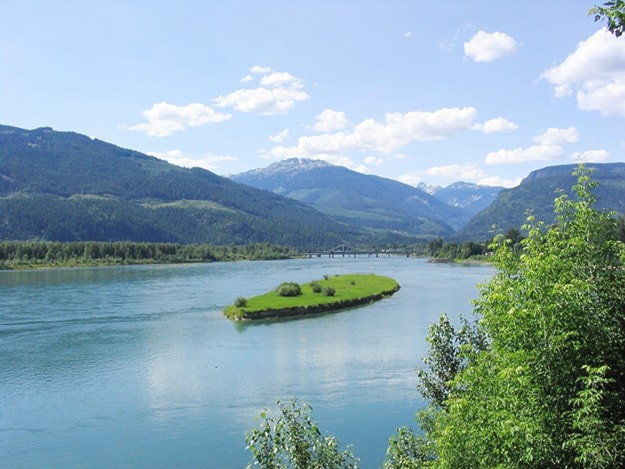By Eric Elliott, Black Press
The Columbia Watershed’s rich ecological diversity is at risk, according to the World Wildlife Federation-Canada (WWF-Canada)’s newest watershed report, which highlights three watersheds in B.C. that are in danger, of which the Columbia is one.
As part of its nationwide assessment of the health of Canada’s watersheds and the threats they face, WWF-Canada released a report in late June that shows freshwater ecosystems in the Columbia, Okanagan-Similkameen and Pacific Coastal watersheds are under threat due to pollution, habitat fragmentation and invasive species.
“WWF is concerned about the results of the threats to watersheds in B.C., a province that is high in ecological riches and vibrant communities,” Elizabeth Hendriks, vice-president of freshwater conservation at WWF-Canada said in a press release. “B.C.’s environment is already under pressure with droughts and industrial developments that can affect water flow, which in turn will have a domino effect on the ecosystems and wildlife and communities that depend on them.”
The main threats that the report concluded included pollution from industrial and municipal sources, and habitat fragmentation caused by roads and railways. The report indicated that it is of growing concern because of pending industrial activity in the province, which could further unbalance sensitive ecosystems.
The Columbia Watershed, a system spanning over 87,000 square kilometres from the United States border to Valemount, was given a threat score that is considered by WWF-Canada to be high overall. Specific threats that were highlighted in the report for the watershed were pollution, habitat fragmentation, invasive species and alteration of flows within the watershed.
While threats in the watershed are considered high, currently WWF-Canada reports that the overall health of the watershed is at a high level.
“This isn’t an oxymoron,” said Megan Peloso, program co-ordinator for the Lake Windermere Ambassadors. “River health is threatened by a host of risks associated with climate change, invasive species introduction, habitat degradation and pollution.”
Both the water flow and bugs in the watershed received scores of, “very good” in the report with “good” scores for fish and no noted decline in the number of native fish species over time.
Peter Holmes, a local habitat biologist at the Ministry of Forests, Lands and Natural Resource Operations, said it’s important that the provincial government works with local governments to ensure a more proactive approach before it’s too late and watersheds like the Columbia drop below a high level of health.
“Rather than protecting it before it reaches that risk level,” he said. “It’s always less costly and less effort required if you protect those ecosystems rather than the costs of restoring the ecosystems, which is usually much higher costs.”
An example that he noted of high restoration costs is the reintroduction of caribou populations across the province where herd numbers have dwindled or disappeared altogether.
Within the WWF-Canada’s report, however, they did note that there is not enough data to produce an accurate score for water quality. Peluso said this lack of data stems from the BC Environmental Monitoring System that the WWF-Canada used in their report. This system is a higher-level assessment that broadly covers the government and does not investigate more local areas such as Lake Windermere and Columbia Lake, Peluso said.
